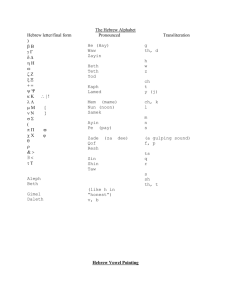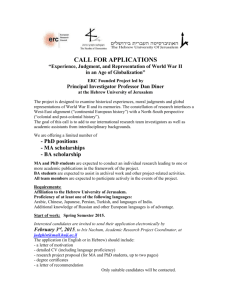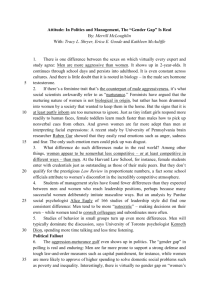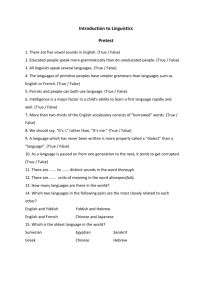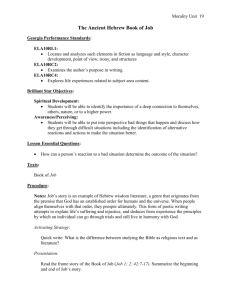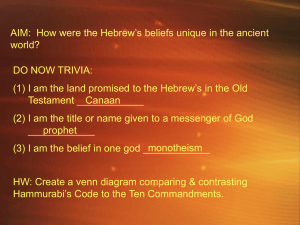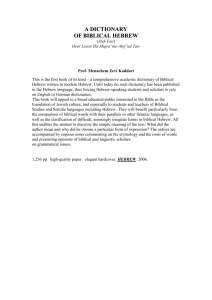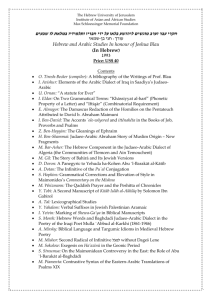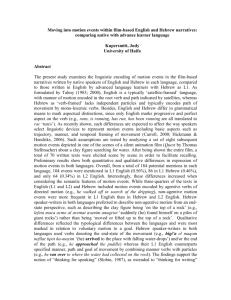Translator quandaries and explanation of translations from Hebrew
advertisement
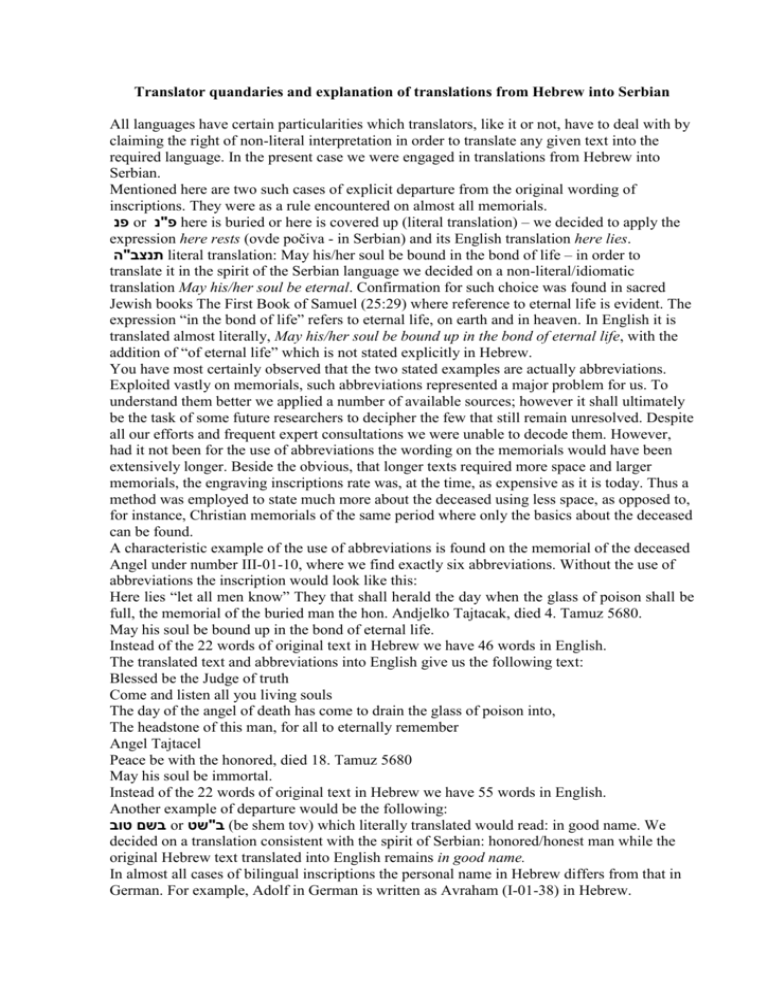
Translator quandaries and explanation of translations from Hebrew into Serbian All languages have certain particularities which translators, like it or not, have to deal with by claiming the right of non-literal interpretation in order to translate any given text into the required language. In the present case we were engaged in translations from Hebrew into Serbian. Mentioned here are two such cases of explicit departure from the original wording of inscriptions. They were as a rule encountered on almost all memorials. פנor פ"נhere is buried or here is covered up (literal translation) – we decided to apply the expression here rests (ovde počiva - in Serbian) and its English translation here lies. תנצב"הliteral translation: May his/her soul be bound in the bond of life – in order to translate it in the spirit of the Serbian language we decided on a non-literal/idiomatic translation May his/her soul be eternal. Confirmation for such choice was found in sacred Jewish books The First Book of Samuel (25:29) where reference to eternal life is evident. The expression “in the bond of life” refers to eternal life, on earth and in heaven. In English it is translated almost literally, May his/her soul be bound up in the bond of eternal life, with the addition of “of eternal life” which is not stated explicitly in Hebrew. You have most certainly observed that the two stated examples are actually abbreviations. Exploited vastly on memorials, such abbreviations represented a major problem for us. To understand them better we applied a number of available sources; however it shall ultimately be the task of some future researchers to decipher the few that still remain unresolved. Despite all our efforts and frequent expert consultations we were unable to decode them. However, had it not been for the use of abbreviations the wording on the memorials would have been extensively longer. Beside the obvious, that longer texts required more space and larger memorials, the engraving inscriptions rate was, at the time, as expensive as it is today. Thus a method was employed to state much more about the deceased using less space, as opposed to, for instance, Christian memorials of the same period where only the basics about the deceased can be found. A characteristic example of the use of abbreviations is found on the memorial of the deceased Angel under number III-01-10, where we find exactly six abbreviations. Without the use of abbreviations the inscription would look like this: Here lies “let all men know” They that shall herald the day when the glass of poison shall be full, the memorial of the buried man the hon. Andjelko Tajtacak, died 4. Tamuz 5680. May his soul be bound up in the bond of eternal life. Instead of the 22 words of original text in Hebrew we have 46 words in English. The translated text and abbreviations into English give us the following text: Blessed be the Judge of truth Come and listen all you living souls The day of the angel of death has come to drain the glass of poison into, The headstone of this man, for all to eternally remember Angel Tajtacel Peace be with the honored, died 18. Tamuz 5680 May his soul be immortal. Instead of the 22 words of original text in Hebrew we have 55 words in English. Another example of departure would be the following: בשם טובor ( ב"שטbe shem tov) which literally translated would read: in good name. We decided on a translation consistent with the spirit of Serbian: honored/honest man while the original Hebrew text translated into English remains in good name. In almost all cases of bilingual inscriptions the personal name in Hebrew differs from that in German. For example, Adolf in German is written as Avraham (I-01-38) in Hebrew. We also came across some memorials where the inscription was written in Ladino, but with the use of Hebrew letters. This was proof of the assumption that both Ashkenazi and the Sephardim Jews were buried in the same graveyard. We also found discrepancies between the Hebrew and Georgian calendar inscriptions of dates of death. On one hand the problem was caused by the stonemasons’ adornment of letters, e.g. the letter ה- he – stands for number 5, while ח- het - is 8. This represented a major difficulty when years had to be determined. To solve the issue we had to compare the date of death with that of adjacent gravestones. It soon became evident that the deficient knowledge, which stonemasons and clients had of Hebrew and the Hebrew calendar, would present another problem. We came upon a memorial where judging by the date of death inscribed somebody had been buried alive and was waiting for his death in 2068! In this as in other similar cases we calculated the Hebrew calendar date from the inscribed Gregorian date. On the memorial listed under number I-03-23 the date of death is engraved and the year left out. On one memorial we encountered a mix of Arabic and Roman numbers with the Roman number written from right to left following the Hebrew custom so that instead of November – XI it read September – IX. We were actually able to resolve this dilemma by the aid of the Hebrew calendar. In cases where the passing of time had damaged the inscriptions and only the date of the Gregorian calendar was visible, short of any means of verification, we calculated the date to the Hebrew calendar directly from the Gregorian. We feel obliged to call attention to the translations that contain three dot pauses between words. The effect of decay and damage of memorials has in many cases resulted in ambiguous translations. While reading the inscriptions on the memorials we became aware of the fact that the oldest memorials had inscriptions in Hebrew only or a combination of Hebrew and German. The most recent memorials seldom have Hebrew inscriptions. In all, this exceptional project has opened many possibilities for further research work, additional investigation and varied analyses (cultural, historic, religious, familial and other). Translators from Hebrew to Serbian: Edita Gaon, Izrael & Milan Fogel, Israel
